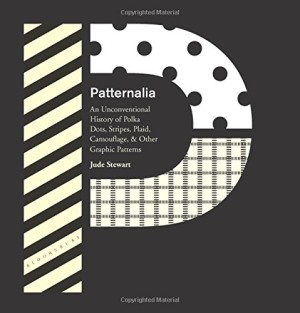
Fighting one illness after another postponed my stop on the Artful Bird‘s blog tour, we’re finally better and I’m so excited to share my interview with Abby with you. Abby is not only a talented plush artist, but a generous artist as well: she often shares her sketches and mistakes and let’s us in on her creative process on her fantastic blog, While She Naps. Recently, she has been teaching her readers how to think and sew three dimensionally in a series of posts on sewing soft toys. Abby is a wonderful teacher and makes beautiful soft sculptures, which makes for a pretty fantastic author of a pretty fantastic book.

What made you want to make soft sculpture and toys?
I love thinking in three-dimensions. The challenge of making my sketch come to life as a stuffed fabric toy or sculpture is something I can’t resist. There are so many options, so many beautiful materials and interesting techniques that make it all come together. It just makes me happy to sit down and try. And when it works…man, that’s thrilling. I feel like I could explore softie making forever and never be done.
How do you choose what kind of birds to make?
Each bird came about in its own unique way. For instance, I was out on a walk with my kids in this little nature preserve behind our house and found a piece of tree bark. It was a good-sized piece and was totally intact except for a round hole that had clearly been pecked by a woodpecker. I brought the bark home and made a woodpecker to perch on it.
The flamingo was a dare. Could I balance a bird that was leaning over? Yep. Fun!
The chick was all about the materials. I thought it would be cool to sew a bird from fluffy terry cloth.
So each bird has a story to tell about how it came to be. I just try to be open-minded and not be afraid to accept a challenge.

What roll do mistakes play in your process?
Mistakes are part of each and every sewing project and they are hugely important, no matter how aggravating they can be at times. Each bird pattern started as a prototype. I drafted the pattern, sewed it up in muslin and then stuffed it to see how it looked. Then there’s an editing and redrawing process to fix the mistakes in the prototype. Sometimes the second draft doesn’t quite work either and more editing and redrawing is needed. I try to constantly remind myself that even if something ends up in the garbage, it is not a waste of time. I may not be able to totally fix it now, but in a few days or weeks or years the solution will come to me and I’ll try again.
And hey, sometimes I make beautiful mistakes! The head on the raptor started life as a doll’s head. I had it all sewn up and stuffed on my desk, but the doll’s body just never materialized. So I sewed a bird body instead, attached the doll’s head, and voila! A new bird was born. And I rather like him, too!

I love how you often use contrasting thread to make your birds. Was that an accident or a conscious design decision?
I think it was an accident the first time it happened, or rather laziness on my part. My machine is nearly 20 years old. It is a Bernette 330 and the Bernina dealer is really far away from my house. As a result, I was lacking in basic supplies for many years. For instance, I only had one bobbin. What a huge pain! One day I had a dark thread wound around it and didn’t want to unwind it to switch threads for a white bird because that would have been a big waste of thread. I just threw caution to the wind and decided to sew the bird in dark thread. When I had it turned and stuffed I really liked that each seam was visible. I like that you can see the maker’s hand in the finished piece. After that, contrasting thread became a regular design element in my work.
Do you feel like you’ve given away all your secrets in your book? Or do you have plans for more books?
I had no problem giving away a bunch of my secrets in The Artful Bird. It is amazing to see people making their own birds now, and I’m thrilled that my techniques can be used and adapted by anyone interested in fabric bird making. I do have a plan for one more book. It is actually an idea that pre-dates the idea for The Artful Bird. Let’s keep our fingers crossed.

The profiles of other bird makers at the end of the book is such a lovely and generous thing to do. How did it come about?
I have been inspired for years by the four other fabric bird makers that I feature in the book and I really wanted to include their work so that readers could share in that inspiration. I was so excited when all four of them agreed to participate. Having a conversation with each of them about their processes for making fabric birds was amazing for me. It really was a highlight of the eight months that I worked on the manuscript and projects for the book. I owe each of them a sincere thank you.
*************************************************************************
Thank you so much Abby!

























